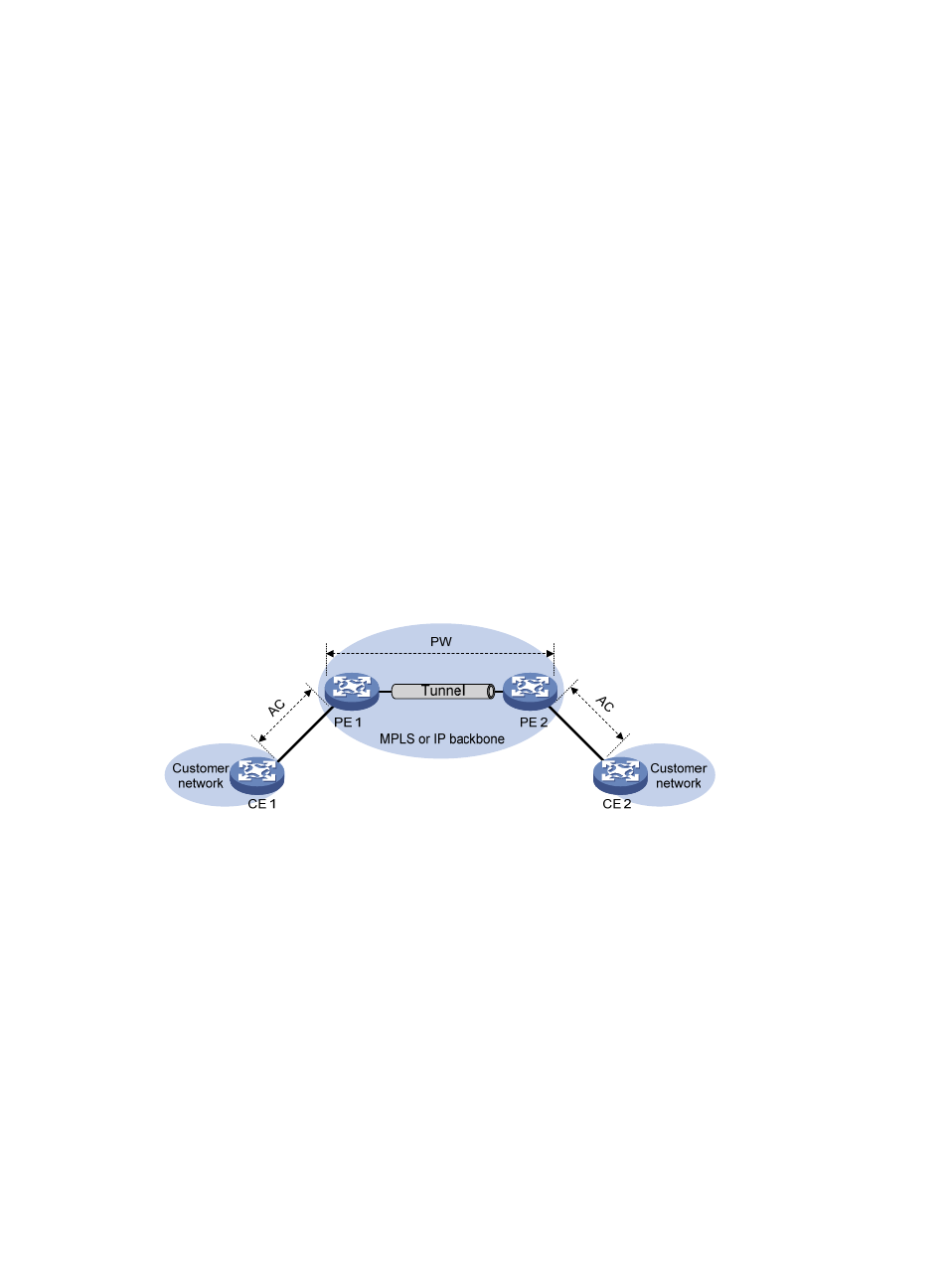Mpls l2vpn network models – H3C Technologies H3C S12500-X Series Switches User Manual
Page 253

242
label range. A PE uses an LO to identify the position of the new label block. The LO value of a
label block is the sum of the LRs of all previously assigned label blocks. For example, if the LR
and LO of the first label block is 10 and 0, the LO of the second label block is 10. If the LR of
the second label block is 20, the LO of the third label block is 30.
A label block whose LB, LO, and LR are 1000, 10, and 5 is represented as 1000/10/5.
•
Route target—PEs use the BGP route target attribute (also called "VPN target" attribute) to identify
VPNs to make sure the sites in the same VPN can establish connections and the sites in different
VPNs cannot. PEs support the following types of route target attributes:
{
Export target attribute—When a PE sends L2VPN information (such as site ID, RD, and label
block) to the peer PE in a BGP update message, it sets the route target attribute in the update
message to export target.
{
Import target attribute—When a PE receives an update message from the peer PE, it checks the
route target attribute in the update message. If the route target value matches an import target,
the PE accepts the L2VPN information in the update message.
Route target attributes determine which PEs can receive L2VPN information, and from which PEs
that a PE can receive L2VPN information.
MPLS L2VPN network models
As shown in
, this model connects two CEs through a PW on an MPLS or IP backbone.
Figure 63 MPLS L2VPN network model
To set up an MPLS L2VPN connection:
1.
Set up a public tunnel to carry one or more PWs between PEs:
The public tunnel can be an LSP or MPLS TE tunnel.
If multiple public tunnels exist between two PEs, you can configure a tunnel policy to control tunnel
selection. For more information about tunnel policies, see "Configuring tunnel policies."
If a PW is established over an LSP or MPLS TE tunnel, packets on the PW have two labels. The outer
label is the public LSP or MPLS TE tunnel label that MPLS uses to forward the packet to the peer PE.
The inner label is the PW label that the peer PE uses to forward the packet to the destination CE.
2.
Set up a PW to connect customer networks:
PWs include static PWs, LDP PWs, and BGP PWs.
To establish a static PW, configure the peer PE address, and the incoming and outgoing PW labels
for the PW on the two PEs. Static PWs consume a small amount of resources but have complex
configurations.